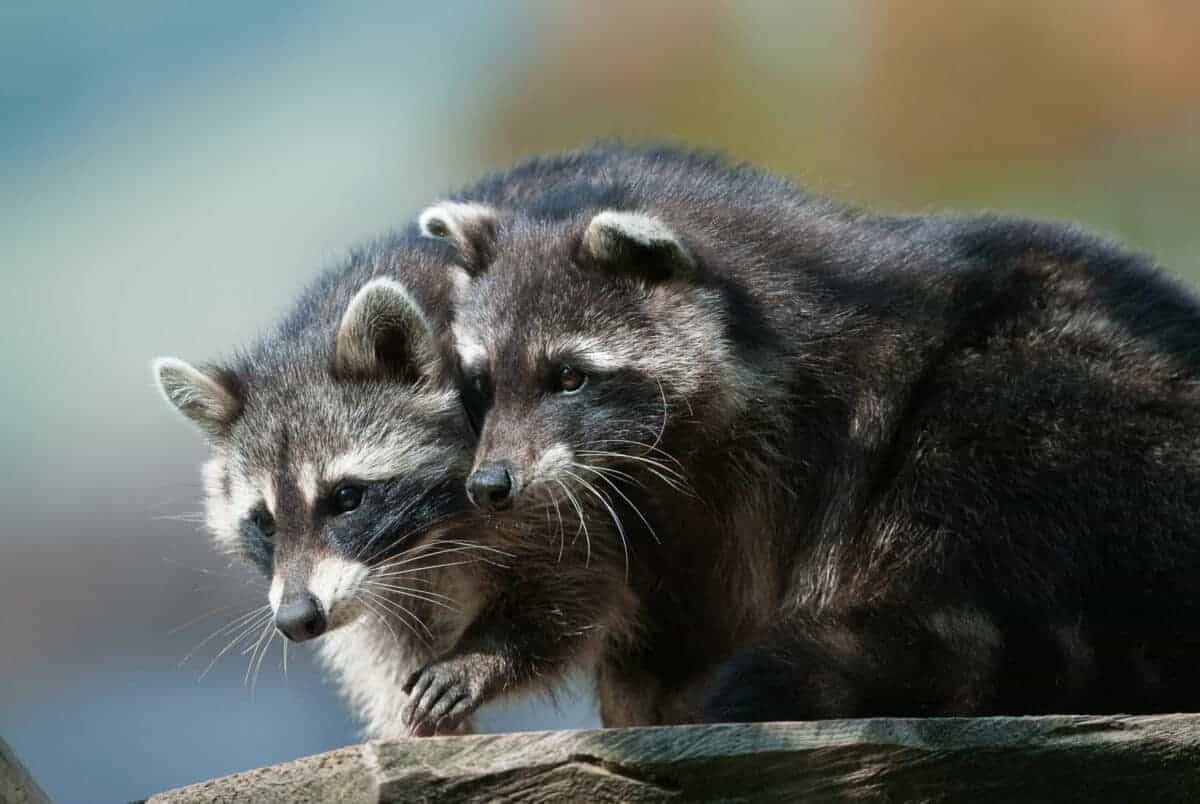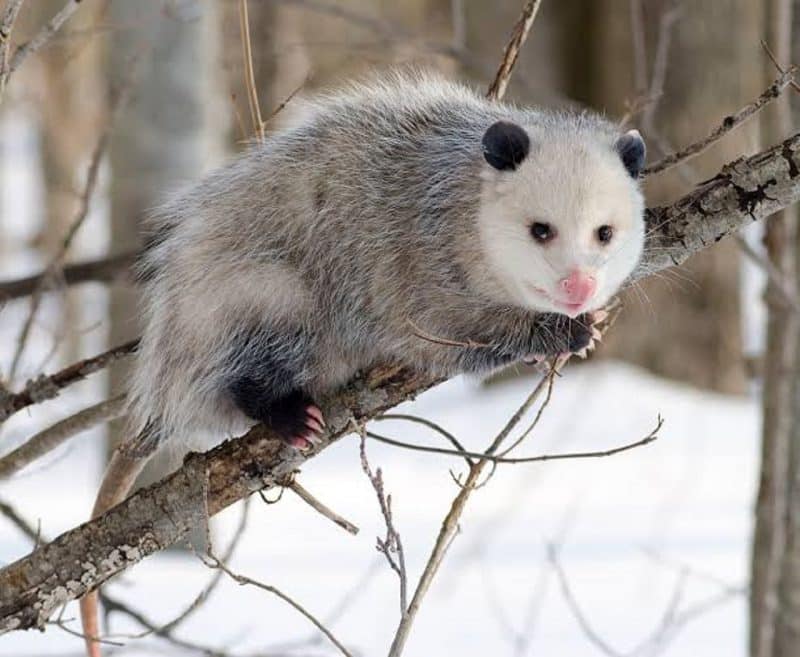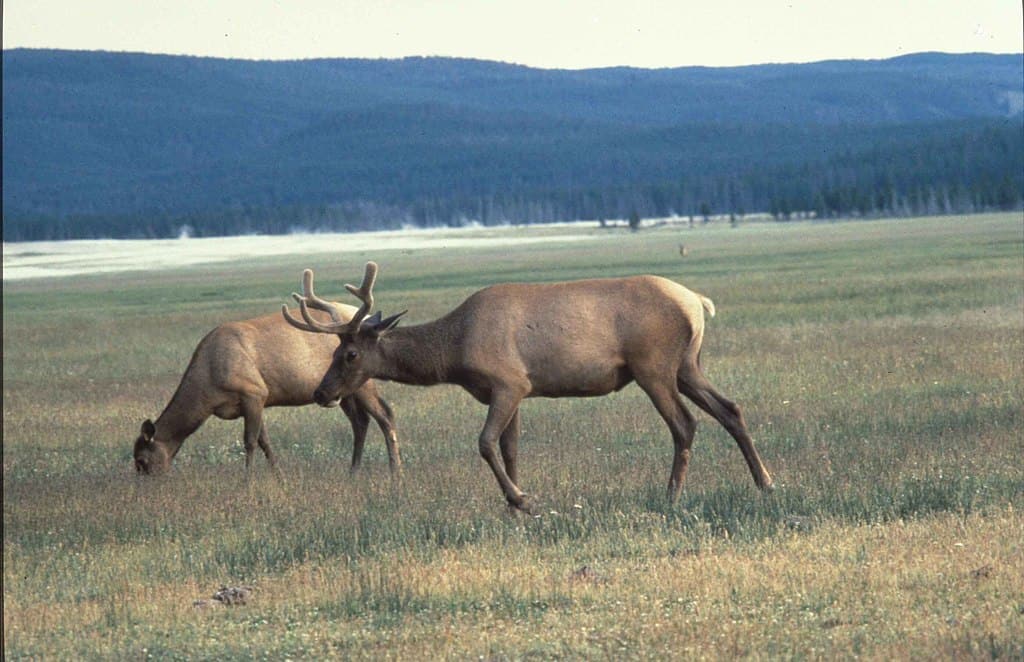Welcome to a journey through Animals and Wildlife in Virginia!
Virginia’s rich wildlife tapestry shares many stars with its neighboring states like Tennessee and North Carolina. Here, black bears, white-tailed deer, squirrels, and other furry critters are integral to the natural landscape, while the skies above feature the majestic flight of eagles and the sly antics of foxes.
But it’s not just the land that captivates; Virginia’s waters are a pristine paradise, clear and shimmering, offering a haven for avid anglers.
In the rivers and lakes of Virginia, you’ll encounter a vibrant underwater world with species like perch, pike, trout, and bass. While Virginia technically lacks a designated state animal, it proudly boasts a colorful lineup of state symbols that truly represent the region.
So, as you explore Virginia’s diverse wildlife, be prepared to be captivated by the natural wonders that make this state a treasure trove for animal enthusiasts.
Some of the animals that you can see in Virginia are linked below:
Key Points
| Animal | Description | Habitat in Virginia |
|---|---|---|
| Raccoon | North American raccoon with a distinctive appearance and adaptability to both the wild and city life. | Wetlands, suburbs, woods, parks, and cities. |
| Groundhog | Sturdy marmot known for Groundhog Day traditions. Lives near meadows, open fields, and streams, raising young independently. | Found throughout Virginia, excluding the eastern shore. |
| Black-Tailed Jackrabbit | The American desert hare with impressive agility and unique reproductive habits. | Dunes, beach grass, grasslands, and deserts. |
| Virginia Opossum | Enigmatic traveler ranging from southern Canada to northern Costa Rica, known for distinctive appearance and habitat diversity. | Wooded areas near lakes, streams, and swamps. |
| Elk | Majestic creatures found mainly on Virginia’s Cumberland Plateau, known for their large size and spiritual significance. | Cumberland Plateau in Virginia. |
| Wood Frog | Harbinger of spring in Virginia’s forests and woodlands, with adaptations to seasonal wetlands and unique predator responses. | Found throughout Virginia, especially in forested areas. |
Raccoon

Enter the world of the North American raccoon, a well-known critter spanning from northern Canada to most of the United States and South America. With its distinctive black mask, striped tail, and a body length of 75 to 90 inches (including a 25 cm tail), this agile creature is a force of nature.
From strong legs and sharp claws to inquisitive minds and artful front paws, raccoons are both intelligent and curious. Their omnivorous nature means they’ll feast on crayfish, arthropods, mice, frogs, fruits, and a variety of vegetation.
Raccoons are no strangers to human territory, thriving in cities, foraging in garbage dumps, and savoring pet food. They’re masters at adapting to urban life, often owing their high population density in big cities to the abundance of food.
In the wild, raccoons favor forests, grasslands, and waterside habitats. They’re excellent swimmers, adept climbers, and often make homes in hollow trees, logs, or abandoned beaver lodges. To survive the winter, they enter periods of hibernation, which can last from a few days in milder climates to up to six months in northern regions. Northern raccoons, in particular, stock up on body fat in late summer and autumn, sometimes doubling their spring weight for a long, cozy winter’s nap.
So, whether it’s rummaging through your trash or gracefully climbing trees, raccoons have carved out their niche in the wild and the cityscape, earning their spot on Virginia’s list of remarkable animals.
Where can one find Raccoons in Virginia?
They are found in wetlands, suburbs, woods, parks, and cities in Virginia.
Groundhog

Sometimes it is found to be damaging gardens and pastures. Named the marmot, the groundhog is a member of the squirrel family, Sciuridae, within the order Rodentia. According to popular mythology in the United States, it emerges in the winter each year on February 2, called Groundhog Day, and if it sees its shadow, winter will last six more weeks.
This hardy mouse weighs up to 6 kg and has a body length of up to 50 cm and a short, green tail up to 18 cm long. The thick fur on the upper parts varies in color between the shades of brown; the feet are black, and underneath there is a buff. Melanistic and albino people sometimes occur in other communities.
Located from the eastern and central United States to as far north as Canada and Alaska. They often live near forest edges near meadows, open fields, roads, and streams but occasionally congregate in dense jungles. The groundhog lives alone outside in the spring when a litter of four to six babies is born, and scraps of one to 9 are recorded. The babies stay with the mother for two to three months.
Where can one find Groundhog in Virginia?
It is found all around Virginia, excluding the eastern shore and extreme southeastern shore.
Black Tailed Jackrabbit

Enter the world of the Black-Tailed Jackrabbit. Also known as the American desert hare, a resident of the western United States and Mexico. Standing at around 2 feet tall and weighing 3 to 6 pounds, this is North America’s heavyweight champion of rabbits.
In Virginia’s diverse landscapes, these creatures find their homes in mixed grassy areas, adapting to a range of environments. Breeding season varies by location, with a peak in spring. Baby jackrabbits come into the world fully equipped – eyes open, covered in fur, and ready to move within minutes of birth. Their mothers don’t provide constant protection, only when nursing.
Jackrabbits are a year-round presence, and they’re not known to hibernate. Their menu includes a variety of shrubs, grasses, and fodder, with preferences shifting as the seasons change. They also play host to a variety of ectoparasites.
Jackrabbits are social beings, often found in small groups while feeding or resting. They’re not fans of caves but might use abandoned ones for shelter and warmth in winter. During the day, they rest in the depressions of shrub cover, emerging in the evening to forage. When the night falls, they become hyper-vigilant, sprinting at an astonishing 56 to 64 kilometers per hour when danger approaches.
These desert daredevils bring a touch of wild charm to the Virginian landscape, and their ability to adapt to various terrains and their lightning-fast sprints make them a remarkable addition to Virginia’s roster of remarkable animals.
Loving these rabbits as much as we are? Check out our dedicated article on baby rabbits!
Where can one find black-tailed jackrabbit in Virginia?
It is found in dunes, beach grass, grasslands, and desserts in Virginia.
Virginia Opossum

Meet the Virginia Opossum: Nature’s Enigmatic Traveler
The Virginia opossum, a true wanderer, journeys from southern Canada to northern Costa Rica. This intriguing species first ventured from the eastern United States to western Canada, eventually making its way down the Pacific coast to northern Baja California, Mexico.
Male Virginia opossums can reach about 100 cm in length, while females average around 72 cm. Males weigh approximately 3 kg, with females at around 2 kg. These unique opossums store body fat in their tails, with males possibly exceeding 6 kg in autumn.
Virginia opossums feature a long head, pointed nose, round ears, and a nearly hairless, scaly tail, making up about half of their length. They have five-toed feet, all equipped with sharp claws. This is of course except for the inner finger, which resembles a thumb on their hind feet.
These opossums possess 50 teeth, with the last premolar being the only one replaced in adulthood. Their ears, eyes, eye rings, feet, and a portion of their tail are black, while toes and ear tips are white in the north and black in Mexico and Central America.
They have faces with white in the north and brown or dark brown in southern Texas, but they always sport a white “forehead.” Their coat can range from pale gray to mostly black. With a coarse texture and long, curly hair covering a dense underlayer.
While black opossums are rare in the north, they are more common in the southern United States. There’s the occasional albino opossum. These are often mistaken for albinism, with white hair but dark eyes, eye rings, feet, and tail base.
These enigmatic travelers add a touch of mystery to Virginia’s wildlife. This makes them a captivating part of the state’s extraordinary animal diversity.
Where can one find Virginia opossums in Virginia?
It is found in wooded areas nearby lakes, streams, and swamps.
Elk

The word elk comes from an ancient Germanic root word that means stag or hart. Considerable male elk weighs around 380 kilograms in the early winter season. The body mass differences are observed between the populations and increase from South to North. There are exceptional ones weighing more than 500kg.
Female elk look similar to bulls externally and in body mass compared to other red deer. In the winter, all elk have dark neck manes that are well-developed in winter. Elk has brown body color. Elk have a more extended gestation period as compared to European red deer. In Asia, elk are found living in cold grasslands, which are located on higher plateaus. Elk are found living on the edges of forests as deserving mention of the animals in Virginia.
Elk feed on grass, plants, leaves, and bark. They have large horns that they use every year. Male elk also engage in normal sexual behavior. Including intercourse, sparring, and bugling, a major singing series that establishes domination over other men and attracts women. These elk are currently native to North America and central/eastern Asia but were highly distributed in the past.
Elk populations were present throughout Eurasia invading Western Europe during the Late Pleistocene. Surviving the original Holocene in southern Sweden and the Alps; less extinct Merriam elk species reached Mexico. The elk is familiar with the countries where it was introduced, including Argentina and New Zealand.
The introduction of species to new environments can disrupt ecosystems. Elk, with their four-chambered stomachs, are grazers, preferring morning and evening feeding. They adapt their diet seasonally, consuming an average of 9 kilograms of green vegetation daily. Elk can be carriers of infectious diseases that may affect livestock, posing a challenge for disease control. Some cultures hold elk in high spiritual esteem.
Where can one find elk in Virginia?
Elk is mainly found on the Cumberland Plateau in Virginia.
Wood Frog
These frogs are primarily found in forests and woodlands. It is a cooler climate in the northeastern United States and all parts of Canada to central and southern Alaska. They are scoring themselves a mention of the list of animals in Virginia. The wood frog is red to brown with an apparent black face mask. Its maximum length is 8.25 cm, and its maximum weight is 8 grams.
It is a spring farmer, using lakes in the wetlands created by meltwater and the recent winter rains. Breeding occurs between early March and early May when females lay a few hundred to a few thousand eggs. The development is moderately rapid and depends on the temperature. Metamorphosis occurs in the next two to three months. The male’s voice is similar to that of a duck.
It has been suggested that wood frogs may be exposed to predatory predators, such as fish, as odor threats as long as the attacker’s chemical mechanisms are closely linked to the injured activists. Later, when the tadpoles smelled the prey, they stopped swimming and kept quiet. In contrast, the larvae of wood frogs exposed to the odor of a predator alone were at greater risk of developing a non-threatening scent when they reached the tadpole stage.
Where can one find a Wood frog in Virginia?
The wood frog is found all over Virginia, especially in forests and woodlands. It is in excellent, moist northern, western, and southwestern Virginia forest areas.
Summary of Animals and Wildlife in Virginia
The Virginia Department of Wildlife Resources reports more than 100 mammals in the province, but that is already the case with wildlife including more than 200 birds and birds.
Much of Virginia’s wildlife resembles neighboring states such as Tennessee and North Carolina. Black bears, white-tailed deer, squirrels, and other rodents are all vital parts of the natural world.
If you enjoyed reading about the animals in Virginia, check out Animals in Alabama and Animals in Illinois next!
Join our Forum for free today!

- These are The 5 Largest Great White Sharks Ever Recorded - July 19, 2024
- The Surprising Benefits of Big Game Hunting - July 18, 2024
- $100k+ Hunting Experiences The Most Expensive Animals to Pursue - July 17, 2024





